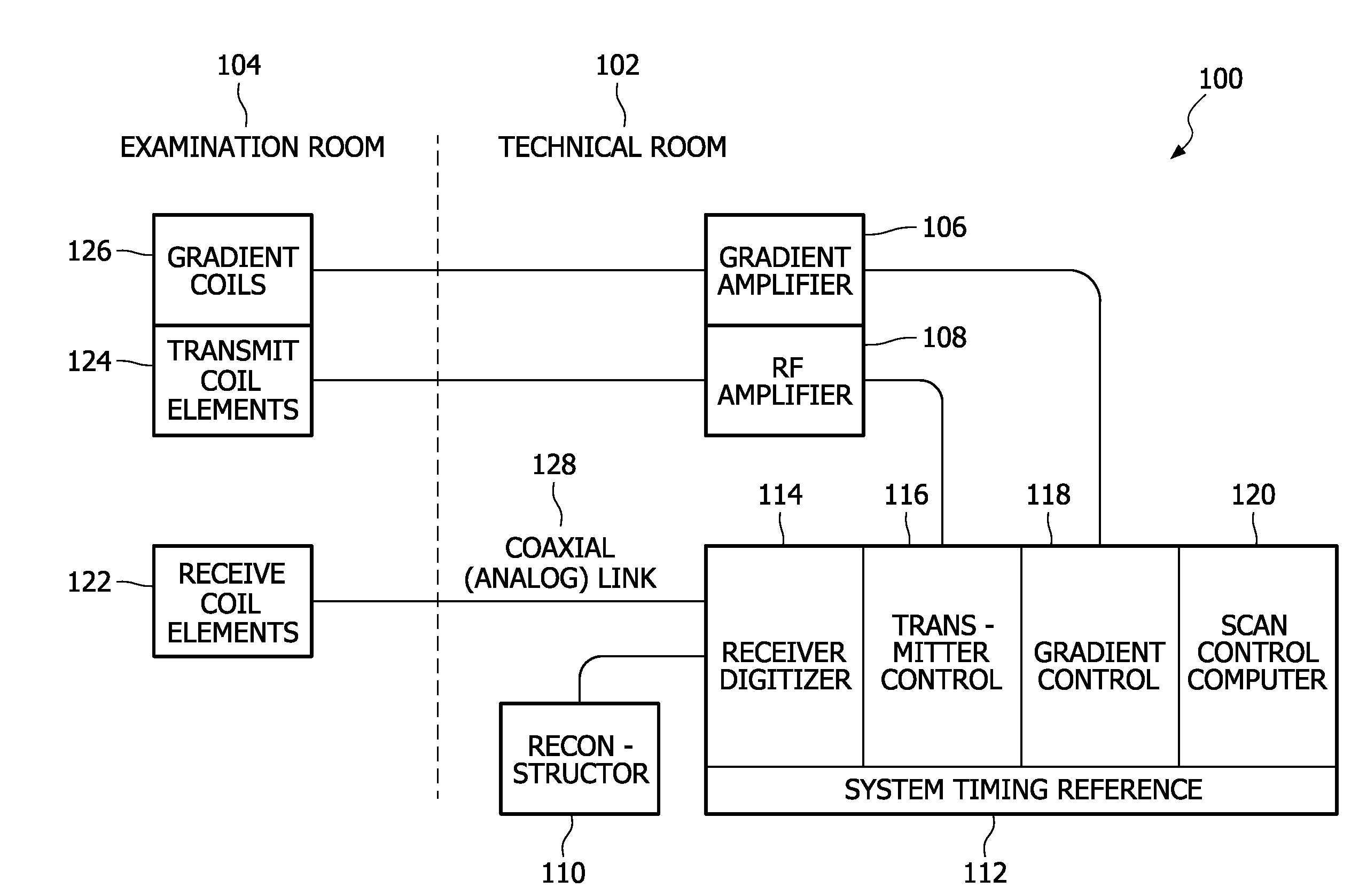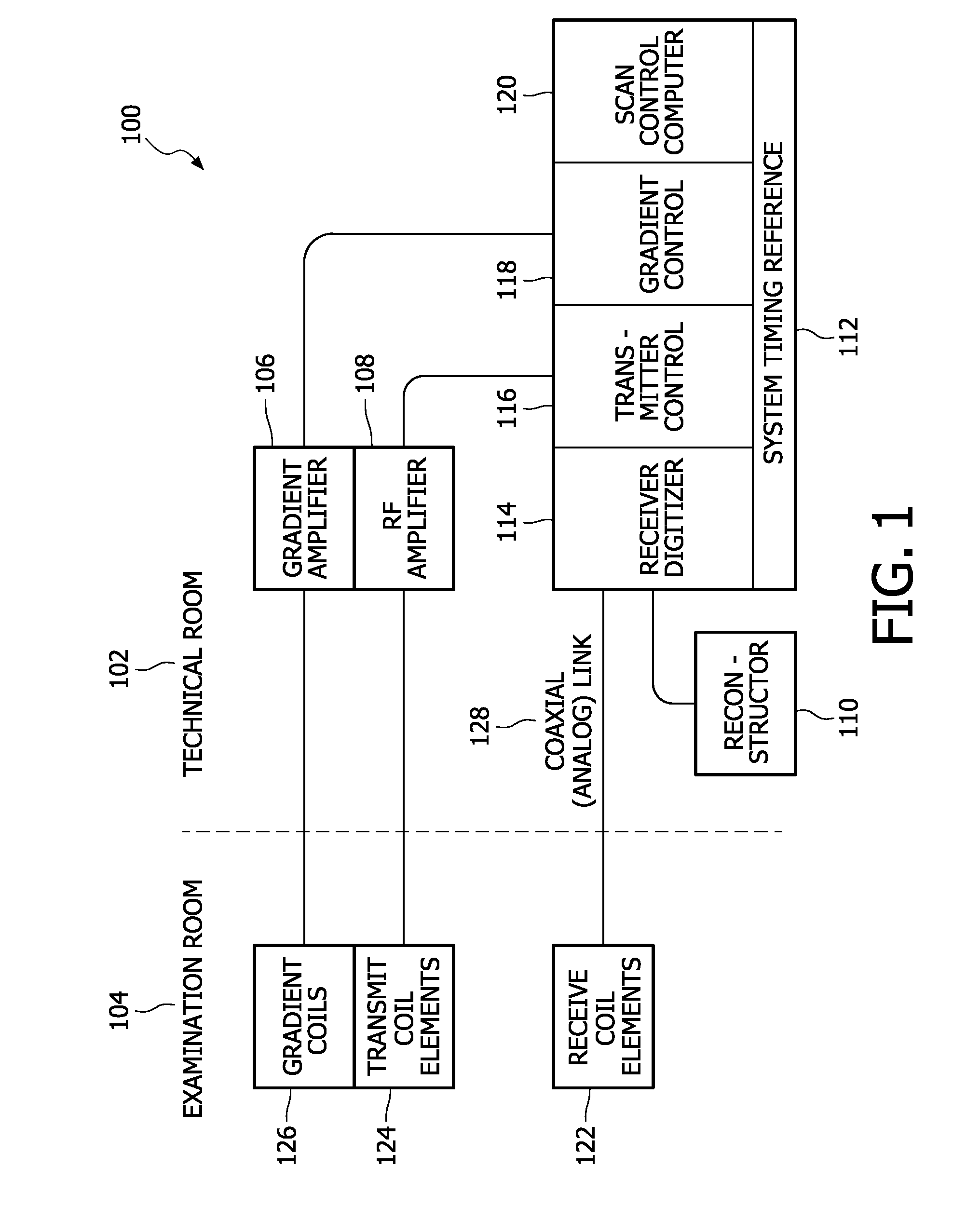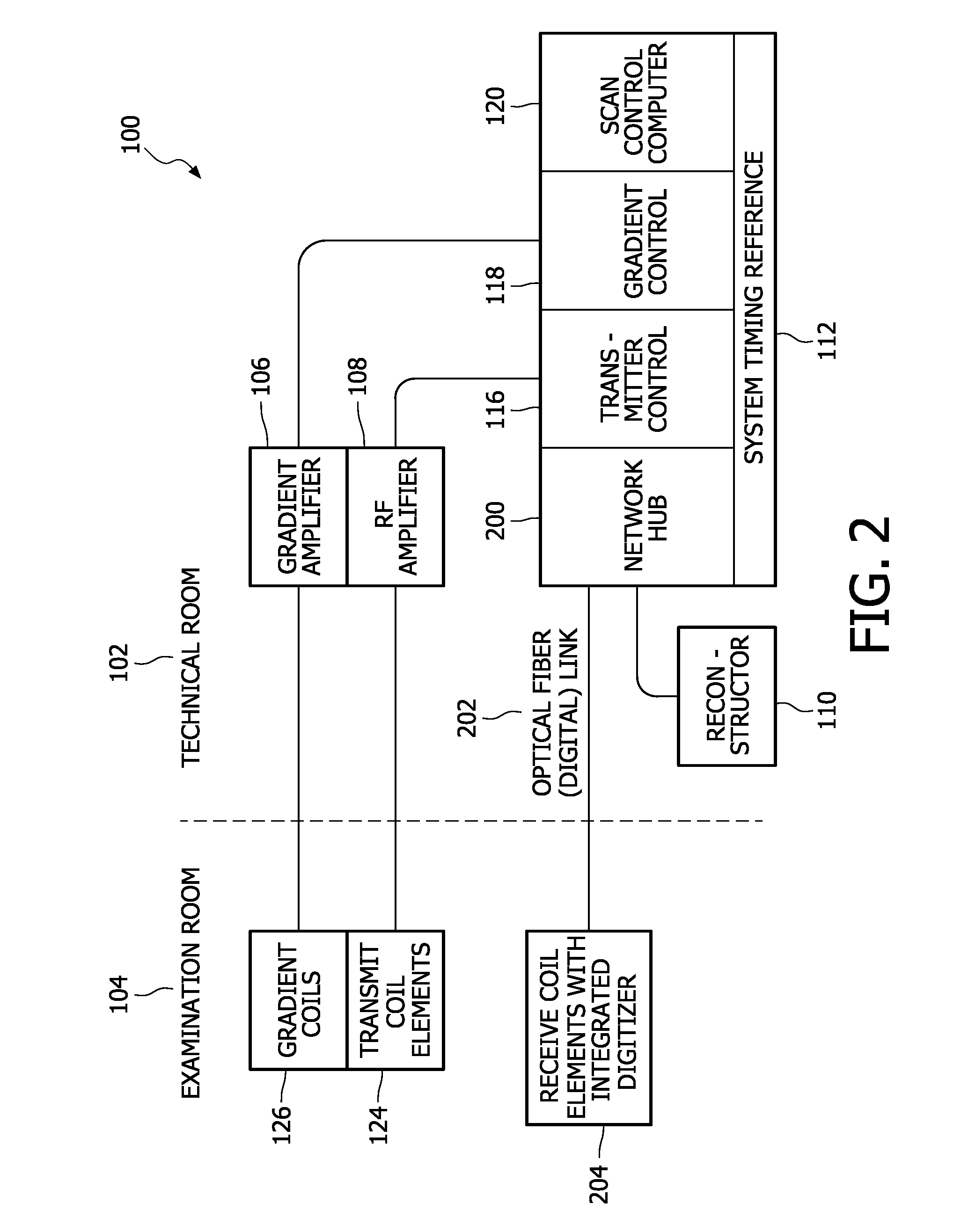Clock generation in MRI receivers
a clock generation and receiver technology, applied in the direction of amplitude demodulation, instruments, code conversion, etc., can solve the problems of even more severe problems, one of the most complex and challenging aspects of cost effective design and production of mr scanners
- Summary
- Abstract
- Description
- Claims
- Application Information
AI Technical Summary
Benefits of technology
Problems solved by technology
Method used
Image
Examples
Embodiment Construction
[0037]FIG. 1 illustrates a state of the art MRI system 100. The state of the art system is separated into two parts, the electrical components which are located in the examination room 104 and the electrical components which are located in the technical room 102. The reason for that separation is, that in the examination room the MRI magnet is located together with its gradient coils 126, its transmit coil elements 124 and the receive coil elements 122. For excitation of nuclei for MR imaging purposes, high frequency RF pulses have to be applied via the transmit coil elements 124 and detected by the receive coil elements 122. The shielding of the examination room ensures that a high quality reception of RF signals without strong disturbances is possible. This also requires a galvanic separation of the electrical components located in the examination room and the electrical components located in the technical room 102.
[0038]In the technical room, a gradient amplifier 106 and an RF am...
PUM
 Login to View More
Login to View More Abstract
Description
Claims
Application Information
 Login to View More
Login to View More - R&D
- Intellectual Property
- Life Sciences
- Materials
- Tech Scout
- Unparalleled Data Quality
- Higher Quality Content
- 60% Fewer Hallucinations
Browse by: Latest US Patents, China's latest patents, Technical Efficacy Thesaurus, Application Domain, Technology Topic, Popular Technical Reports.
© 2025 PatSnap. All rights reserved.Legal|Privacy policy|Modern Slavery Act Transparency Statement|Sitemap|About US| Contact US: help@patsnap.com



